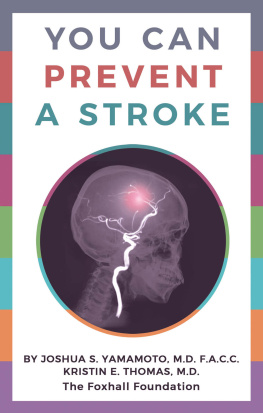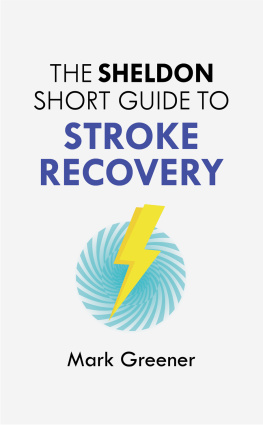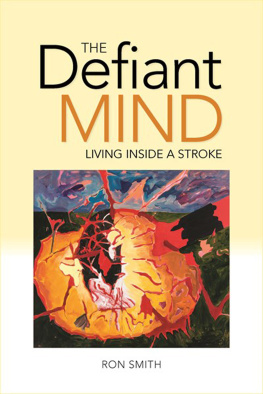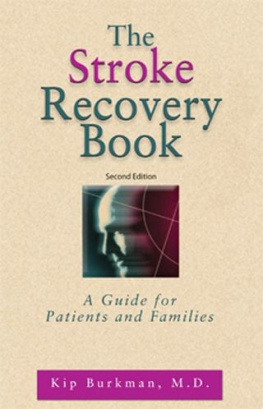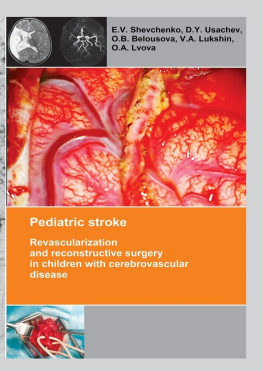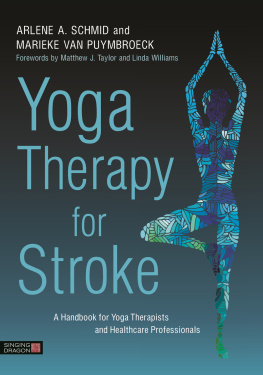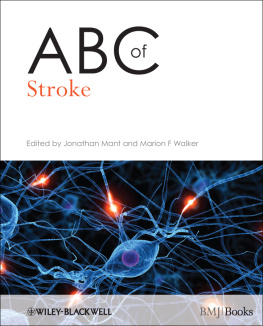STROKE-FREE
FOR LIFE
The Complete Guide
to Stroke Prevention
and Treatment
DAVID WIEBERS, M.D.
A L IVING P LANET B OOK

T O MY PATIENTS
Contents

A New Paradigm for Stroke Prevention and Treatment
W hen I first began my medical training in the 1970s, I was immediately drawn to neurology. What could be more fascinating than decoding the mysteries of the human brain? But many people discouraged me from pursuing this field. The brain was simply too complex, they believed, and the nature of brain diseases too opaque, for doctors to be able to help most people. Better to go into cardiology, I was advised, where life-saving advances were being made in repairingeven transplantingdiseased hearts.
I stuck with neurology because the lure of exploring the uncharted regions of the brain was simply irresistible. The last few decades have been a time of tremendous advancement in our understanding of the way the brain works. The 1990s were rightly dubbed The decade of the brain, when the advent of new imaging technologies opened a window into the master control room of our consciousness. After centuries of merely guessing how things worked inside our skulls, we now have vivid pictures of neural pathways. We can understand how nerve impulses control various aspects of our physical being, and can even identify the neurological basis for many of our emotions.
In the past few years, breakthroughs in imaging technologies, medications, and surgeryas well as data from population-based epidemiologyhave given us dramatic insights into the most prevalent and destructive of brain disorders: stroke. What weve learned flies in the face of many of our most deep-seated assumptions about this dreaded killer and disabler.
For many years, people referred to stroke as apoplexy, a term derived from a Greek word meaning to strike down. The word portrays stroke as something sudden, unexpected, unpredictable. An outdated clinical term for stroke, cerebrovascular accident, carries a similar connotation. These terms no longer apply. In the last few decadesand particularly in the past few yearswe have learned what causes and contributes to stroke. We have learned that stroke, though sudden, is neither unexpected nor unpredictable. In fact, in most cases, it represents the end stage of a related disease or condition.
As a researcher who has devoted his career to treating stroke, I find these to be exciting and empowering revelations. If stroke can be predicted, and its causes pinpointed, then it can be prevented. In fact, I believe that up to 80 percent of strokes are preventable. The best news of all is that in the majority of cases, stroke can be prevented through noninvasive changes in lifestyle.
Everyone in health care recognizes that disease prevention saves more money, lives, and suffering than reactive treatment, but up till now, prevention has played only a minor role in stroke medicine. Ive written this book to promote a shift toward a new paradigm in stroke treatment: a paradigm of prevention that begins well before old age. Preventing stroke means looking at lifestyle issues and risk factors that begin causing disease in our thirties and forties.
Until we convert our new knowledge about stroke into a coherent prevention program, millions of people are being disabled or killed by a calamity we are failing to avert. The statistics are staggering: Stroke strikes approximately 750,000 Americans every year, killing an estimated 160,000. There are more than 4 million stroke survivors in the United States and almost 30 million direct family members of those survivors. During the course of a lifetime, four out of every five families in the United States will be touched by stroke.
These numbers are tragic, especially since it doesnt have to be this way. We now have the power to prevent most strokes. Prevention is not a passive process. Rather than fearing stroke as an unexpected and inevitable killer and disabler, we need to face it squarely as a predictable medical condition that can be prevented. Each of us needs to take an active role in shaping our medical destinyfirst, by assessing our risk level, and second, by taking important steps toward reducing that risk.
Risk assessment has been an imprecise science. We know that certain conditions have increased stroke risk, but we havent known to what extent and how various risk factors interacted. That has changed. The culmination of four decades of research at Mayo Clinicalong with studies from other medical centers and those we have collaborated on or conducted around the worldhas yielded a more complete picture of the numerous variables that increase stroke risk as well as how those variables interact. Our team at Mayo has recently converted this information into a comprehensive method for predicting who is at risk of stroke.
We wanted to make this new risk-assessment tool available to the general public in book form. Armed with the program outlined in this book, any motivated person can create a personalized prevention program.
THE PREVENTIVE POWER OF LIFESTYLE
The newly fleshed-out portrait of the lifestyle and medical factors that can lead to stroke is a powerful preventive weapon. True, this complex picture indicates that no single simple approach can prevent stroke, but it also shows us that stroke is much more deeply rooted in remediable lifestyle risks than has been previously thought. Each of us can have a profound influence on our medical destiny.
I hope this book will give you all the information and advice you need to add years to your life. Rich years, full of family and friends, work and play. Its really up to you. I see a vital role for such lifestyle factors as diet, exercise, and stress reduction in preventing stroke and the conditions that lead to stroke. As more and more lifestyle factors enter into the risk/prevention equation, your role becomes increasingly central. Only you can control such lifestyle risk factors as diet, alcohol consumption, stress, and smoking cessation. Although you will need to work with your doctor to review the various prevention and treatment options at your disposal, the ultimate decision whether or not to take steps to prevent stroke will rest with you.
I believe lifestyle changes should be viewed on a level playing field with drug therapies and surgical and procedural interventions in approaching stroke prevention. Considering that I work in one of the highest-tech medical centers in the world, you may be surprised that I advise my patients to consider the most natural and least invasive treatments first. This is because decades of experience has taught me to respect the delicately balanced nature of brain chemistry, physiology, and anatomy. Drugs and surgery introduce new risks into the calculus of treating any brain disorder.
Drugs are often a valuable part of stroke treatment, and such drugs as Mevacor and Zocor, for instance, have proven to be highly effective treatments for high cholesterol, which can lead to certain kinds of stroke. Every drug has side effects, and using multiple drugs incurs the risks of dangerous interactions that can be difficult to anticipate for individual patients. Its also true that the frequency and seriousness of side effects are often underrecognized and underreported. If dietary changes can achieve the same goals as cholesterol-lowering drug therapies, why not simply eat differently? The more natural dietary approach yields health benefits that far outweigh merely lowering cholesterol without the potential for serious side effects that drugs carry.
Next page

